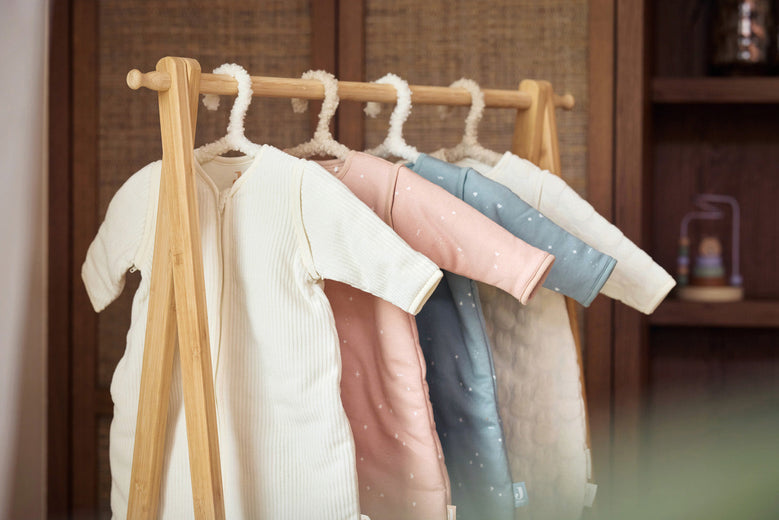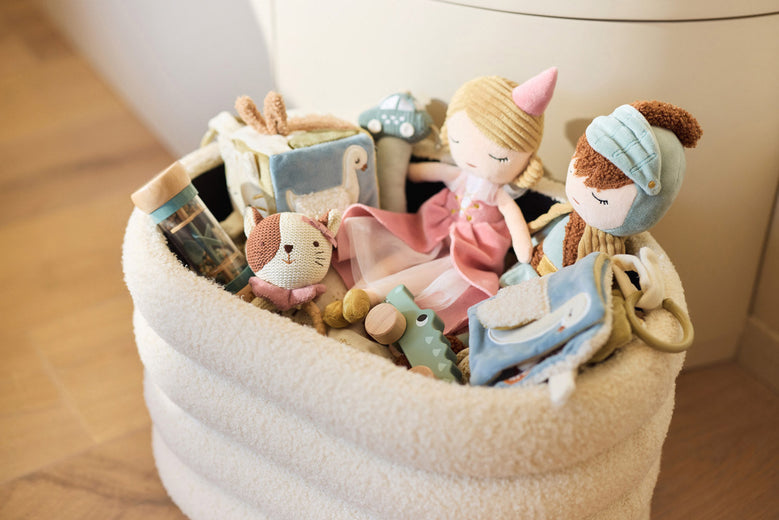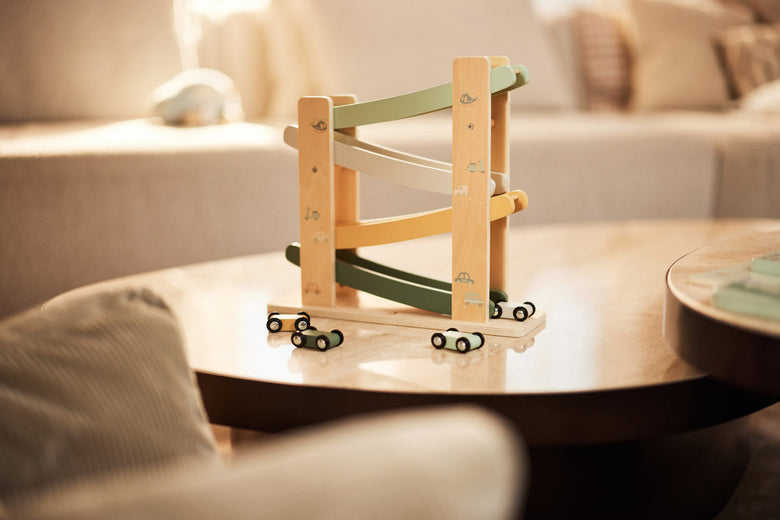The cutest Jollein Toys for babies from 0 to 1 year
A baby’s first year is a time full of growth and wonder. Every day, your little one learns something new: reaching, rolling, listening, looking, and feeling. The right toys can make this journey of discovery safe, fun, and stimulating.
At Jollein, you’ll find toys perfectly suited to this special stage. The collection combines soft materials, calming colors, and clever designs that support your baby’s development. Playtime becomes not only enjoyable but also a meaningful moment of bonding and exploration. Discover the cutest gifts for your little one or the perfect present for a newborn!
Safety and Materials
Jollein toys are designed with little hands in mind. Every item is made from safe, high-quality materials that feel pleasant to touch. The soft colors and natural fabrics fit perfectly into any nursery and bring a sense of calm to daily play and learning moments.
What makes these toys even more special is that they grow with your baby. From the first weeks when your little one mostly observes and listens, to the stage of grabbing, rolling, and exploring – Jollein offers something appropriate for every phase.
Pacifier cloths
Pacifier cloths are often a baby’s very first favorite companions. They provide comfort, familiarity, and security and can be taken everywhere: in the crib, on the couch, or on walks in the stroller.
Jollein comfort blankets are made from soft materials like teddy fabric and velour, perfect for snuggling and holding close. Many designs also include small tags, buttons, or rattles that stimulate the senses and help develop fine motor skills. How cute is the Little Star Pacifier cloth?
Rattles
Around three months, babies discover that they can grasp and move objects. A rattle is the perfect toy at this stage: lightweight, easy to hold, and with a gentle sound that sparks curiosity.
Recently, wrist and foot rattles have also become available. These little rattles attach to your baby’s arms or legs, so every movement creates a soft sound. This makes everyday motions even more fun and engaging while your baby spends hours exploring touch and sound. They help develop fine motor skills, hearing, and hand-eye coordination in a playful way, keeping your little one active and entertained.
Baby Gyms and Activity Cubes
A baby gym is an essential for the first months. Your baby lies underneath, looks up, and reaches for the soft hanging toys. This naturally stimulates motor skills and coordination. Jollein offers various baby gym toys that can be attached to the gym – from cute animals to soft rattles. Which one is your favorite?
Later in the first year, an activity cube is a wonderful next step: a block full of textures, shapes, and sounds that keeps your baby engaged and learning. The Animal Friends Activity Cube is a perfect example – educational, safe, and fun for the second half of the first year.
Baby Mobiles
A baby mobile brings calm and fascination to the nursery. The moving figures capture attention and stimulate vision, while the gentle rotation has a soothing effect. Hang it above the crib or playpen for a quiet moment in between activities. Jollein baby mobiles are real eye-catchers in the nursery and look adorable under a mosquito net.
Teething Rings
Around four to six months, the first teeth often start to appear. This can be uncomfortable for your baby, but a teething ring can help relieve the discomfort. Jollein teething rings are made from safe materials such as soft silicone or natural rubber, allowing your little one to chew and explore safely. They support both teething and the development of hand-eye coordination and fine motor skills.
Our Favorites for Babies from 0 to 12 Months
Baby Gym – Natural Wood: stimulates movement and curiosity from the very first weeks. Choose from the cutest baby gym toys!
Baby Mobile – Teddy Bear: soft and calming, perfect above the crib.
Wrist Rattle – Tiny Park: your little one’s new favorite friend always within reach!
Comfort Blanket – Elephant Tales: provides comfort and familiarity anywhere you go.
Activity Cube – Animal Friends: engaging and educational, perfect for the second half of the first year.
The first year flies by, but the memories of all those little discoveries will last forever. With Jollein toys, you give your baby the chance to grow, learn, and enjoy in a safe, calm, and loving environment.
Discover the complete range and be inspired by the most delightful toys for the very youngest.







